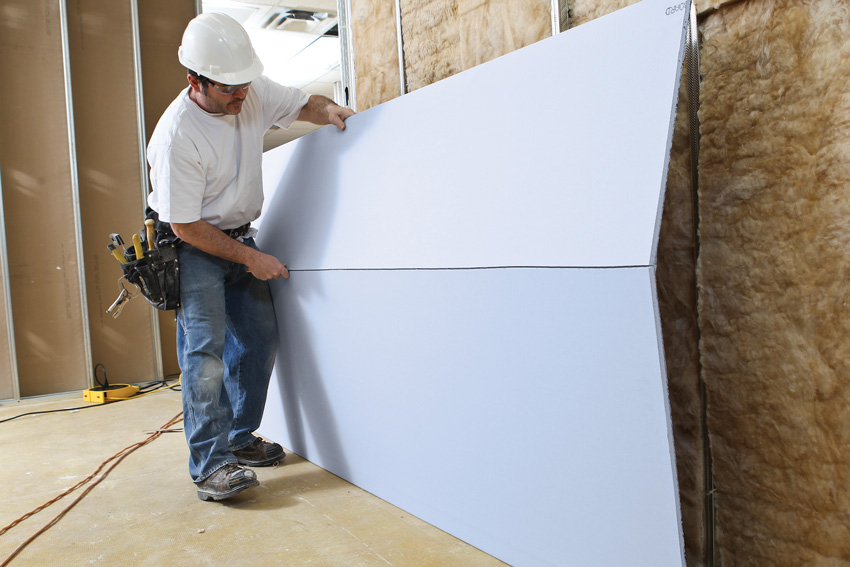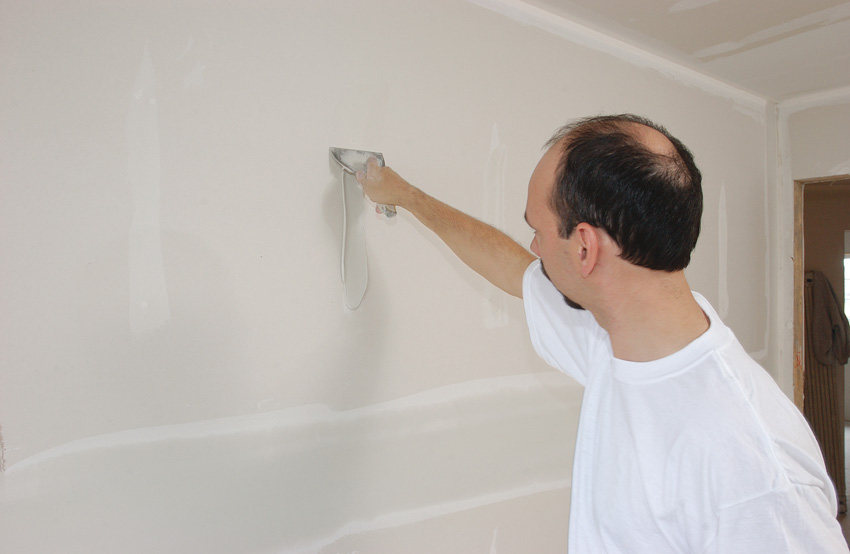Innovations in Residential Construction Using Advanced Gypsum Products
Installing and Finishing All Types of Gypsum Boards and Panels
Once the appropriate gypsum board or panel products are selected for a project, the manner in which they are installed and finished becomes a prime consideration. Toward that end, ASTM C840 – 17a: Standard Specification for Application and Finishing of Gypsum Board is often cited and referenced as the quality standard for acceptable workmanship and for achieving the designated fire rating in a construction assembly where needed. This ASTM specification references the need to follow construction details based on recognized fire and acoustical tests to achieve the intended results under those conditions. The standard addresses framing size, fastener spacing, ventilation, substrate, surface preparation, cutting, and installation application. Materials categorized under this specification include gypsum boards, gypsum wallboards, gypsum backing board and water-resistant gypsum backing board, exterior gypsum soffit board, and gypsum ceiling board. Finishing materials include compounds, joint tape, fasteners, nails, screws, and staples. It also addresses specific means of cutting and installing gypsum board, the proper conditions of substrates, and requirements for proper on-site storage of gypsum products.

ASTM C840 is the standard for cutting, installing, and fastening gypsum board and panels and can be used to specify proper installation of these products.
In addition to ASTM C840, the Gypsum Association has also identified different levels of surface finish for gypsum boards and panels. In 1990, it first published document GA-214 and subsequently updated it in 2015 so that it is now known as GA-214-2015: Recommended Levels of Finish for Gypsum Board, Glass Mat & Fiber-Reinforced Gypsum Panels. The updated version of this standard was a collaborative effort of the Gypsum Association and the Association of the Wall and Ceiling Industries-International (AWCI), the Ceilings & Interior Systems Construction Association (CISCA), the Painting and Decorating Contractors of America (PDCA), and the Drywall Finishing Council (DWFC). It was predicated on the need to update prior standards that only addressed paper-faced gypsum board but did not address some of the newer, high-performance, and panel products.
Both GA-214 and ASTM C840 use the same format to identify different levels of finish appearance on a scale of zero to five, described as follows:
- Level 0 finish: A the name implies, this is unfinished gypsum boards or panels that are simply secured to studs or a substrate for the work to be considered complete. No tape, joint compound, corner bead, or any other accessories are called for in a Level 0 finish.
- Level 1 finish: This is the most basic level of finish to achieve a continuous surface across joints and corners. In a level 1 finish, drywall tape is embedded in a single layer of joint compound at all joints and interior corners. The surfaces must be free from excess joint compound, but tool marks and ridges are acceptable. Fastener heads and accessories, such as corner beads or trim, are not required to be finished.
- Level 2 finish: In this case, joint tape is embedded in a layer of joint compound as above, but then it is tooled and smoothed with a second thin layer of joint compound. At this level, fastener heads and accessories shall also be covered with one layer of joint compound and smoothed.
- Level 3 finish: Using a level 2 finish as the base, an additional coat of joint compound is then applied to all joints, fastener heads, and accessories for a total of two coats of joint compound everywhere. All surfaces, including joint compound, shall be sanded smooth and free of tool marks. A level 3 finish is typically used where a heavy wall covering or other heavy textured material will be applied over the wall surface.

GA-214 published by the Gypsum Association defines different levels of surface finish on a scale of 0 to 5 based on the use of tape and finishing compound in 1 or more layers.
- Level 4 finish: This is probably the most typical and common level of finish in residential construction since it is used where flat paints and lightweight wall coverings are applied over the finished gypsum board surface. In this case, after all of the steps needed for level 3 finish are completed, then all tape, joints, fastener heads, and accessories are covered with a third layer of joint compound that is sanded smooth. Note that if a level 4 finish is being sought for glass mat panels, it may be appropriate to have a mockup created on-site since it is reasonable to expect a different appearance on this product than on paper-faced gypsum board. If a smoother, more continuous surface is desired on glass-mat panels, then a skim coat across the full surface may be warranted.
- Level 5 finish: This is the highest level of finish and requires the greatest amount of work and skill. It is typically used where semi-gloss, gloss, or other nontextured paints cover the gypsum product or where strong severe lighting conditions occur, such as wall-wash light fixtures or light from a nearby window. In a level 5 finish, a thin skim coat of joint compound (or other specialized material) is carefully applied to the entire surface of the wall to achieve a uniform, consistent appearance. Although less commonly specified due to the greater cost, it is important that if a level 5 finish is called for on selected walls, then those locations must be clearly identified in the construction documents so that contractors can properly price the increased amount of work.
Selecting the appropriate level of finish for walls and ceilings using gypsum boards and panels will help insure the best final appearance, meet fire-resistance requirements, and help control project costs.









